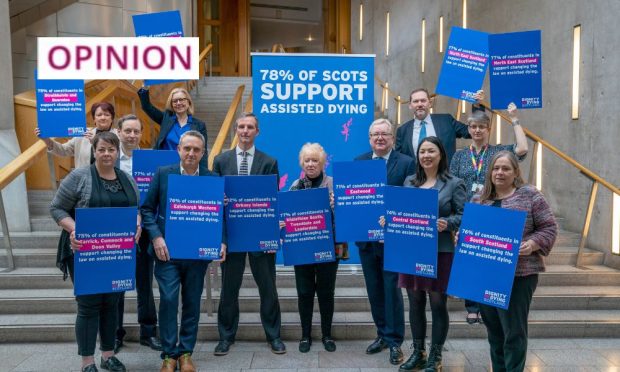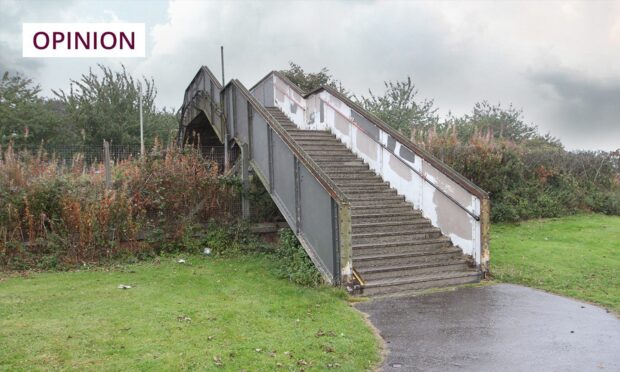Having given birth to a Hate Crime Law which has divided the nation, the Scottish Parliament will soon be asked to breathe life into another Frankenstein monster of a law masquerading as a kindness, but which represents the gruesome mask of death
Hopefully common sense will ensure it never sees the light of day on the statute book.
Liberal Democrat MSP Liam McArthur’s bill to introduce assisted dying for terminally ill adults into our law represents the slippery slope towards ridding society of its expensive unwanted problems.
And you or I might easily one day become one of those problems.
This is a dangerously misguided path disguised as a dignified exit from existence.
Dressed up in fancy finery as care for the terminally ill, it opens Pandora’s Box for those with potentially ulterior motives, from saving the taxpayer money to ensuring inherited wealth for those who would lose no sleep in disposing of an ill parent.
Former first minister Nicola Sturgeon admits she is “veering away” from voting in favour of it saying she had “rarely been as conflicted on any issue as I am on this”.
And with current First Minister Humza Yousaf, backed by the Church of Scotland, The Catholic church, and the Scottish Association of Mosques, all in opposition to it, hopefully this contentious proposal will never take a living breath as the law of the land.
‘Grim tales’ of assisted dying in other countries
In the Netherlands where euthanasia is legal, a 28-year-old woman suffering from depression is to be euthanised after her psychiatrist said there was nothing else that could be done to cure her.
Zoraya ter Bee will be ‘dispatched’ at her home in May when a doctor will give her a sedative to stop her heart.
A spokesman for SPUC (The Society for the Protection of the Unborn Child) described it as showing “a society all too ready to usher ‘problem’ people into early graves”.
Canada, once a beacon of civilised values should also be an alarm bell for everyone who thinks assisted dying is some kind panacea to cure life’s vagaries of health misfortunes.
There, grim tales have emerged of Canadians being offered assisted dying in cases “approaching the limits of the law”.
Their Medical Assistance in Dying programme (MAiD) which they’d intended to roll out more widely to the mentally ill has been delayed.
Laws which begin with good intentions can quickly become laws with unintended consequences, as the current furore over the hate crime legislation in Scotland proves.
The notion of bumping folk off for a growing list of issues which aren’t life threatening signals a casual disregard for life, totally at odds with the medical profession’s swearing of the Hippocratic Oath, and the promise within that oath of “first do no harm”.
If we pursue this ghastly policy where will we draw the line in the sand?
Will it be to save the annual care costs of those family members with Alzheimer’s who are no longer the folk we once knew but whom we still love as though they were?
Will we decide it’s simply cheaper to dispose of those friends and family who are diagnosed with cancer who might well be treated successfully but at a great financial cost to the NHS?
Short hop to death penalty
And, bluntly, if we can do away with the innocent who are depressed or have eating disorders, it’s but a short intellectual hop to save money by re-introducing the death penalty for those guilty of heinous crimes, and who’ll cost a great deal of money and resources to keep alive for twenty plus years.
This proposal is a step too far in a civilised society and if our MSPs vote for it we’ll know that we have lost all respect for the dignity and sanctity of human life.
That would put all of us at risk in the future as the categories of those deemed to be disposable widen through time to include classifications which currently seem unthinkable but could become commonplace.
The 1976 Science Fiction film Logan’s Run depicted a future where to maintain an equilibrium of population and resources everyone was terminated on reaching the age of 30.
Those who try to escape this compulsory euthanasia are hunted by a ‘Sandman’; the name given to the fairytale character that sprinkles dust into children’s eyes at night to send them to sleep.
But there’ll be no waking up if this particular sandman is introduced into Scots law.
To put it bluntly this proposal should be put to sleep, never to waken again.












Conversation